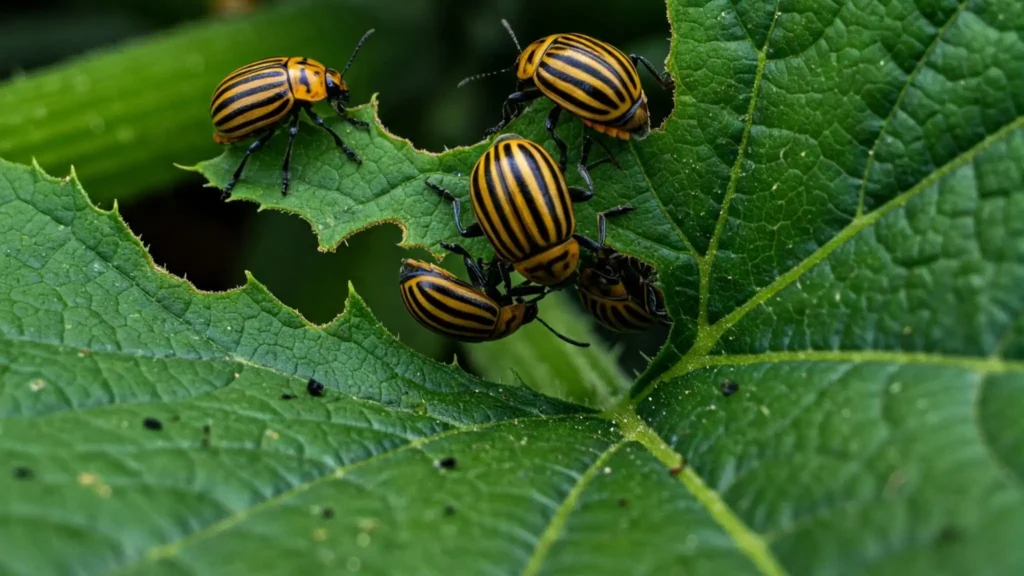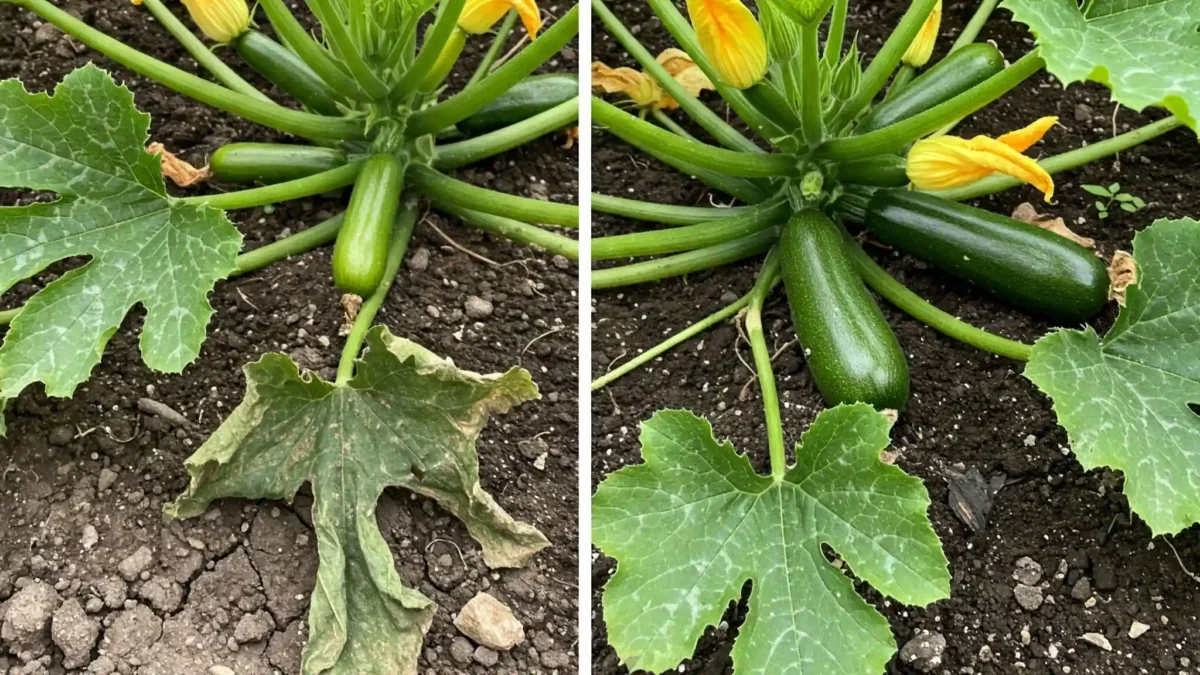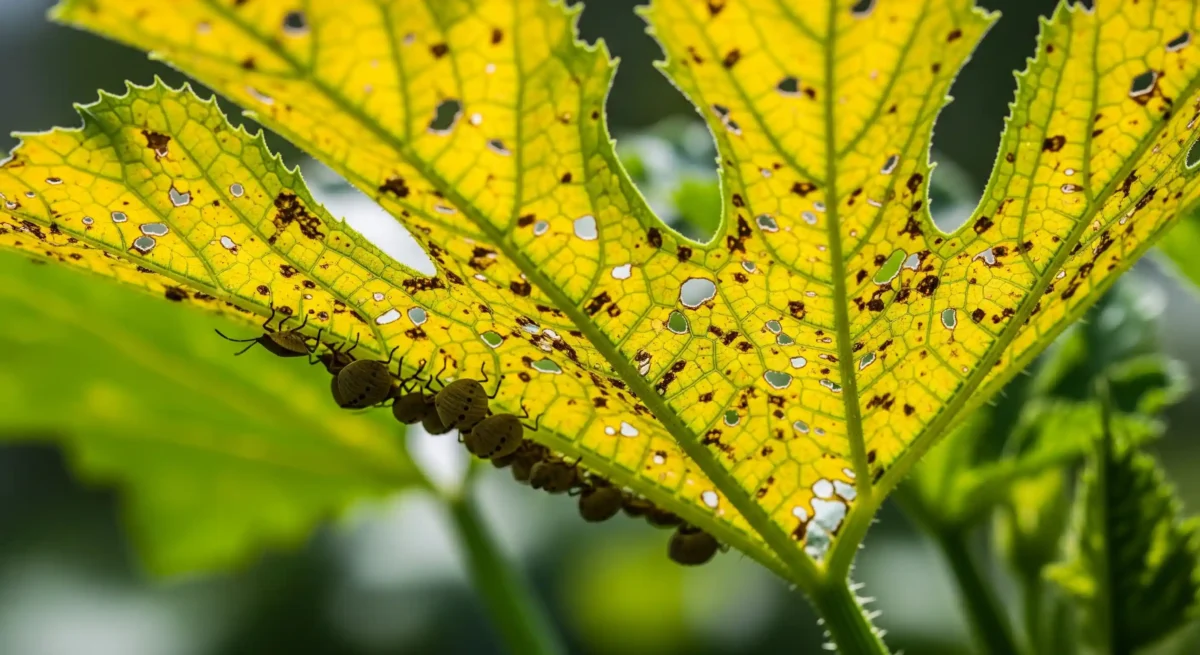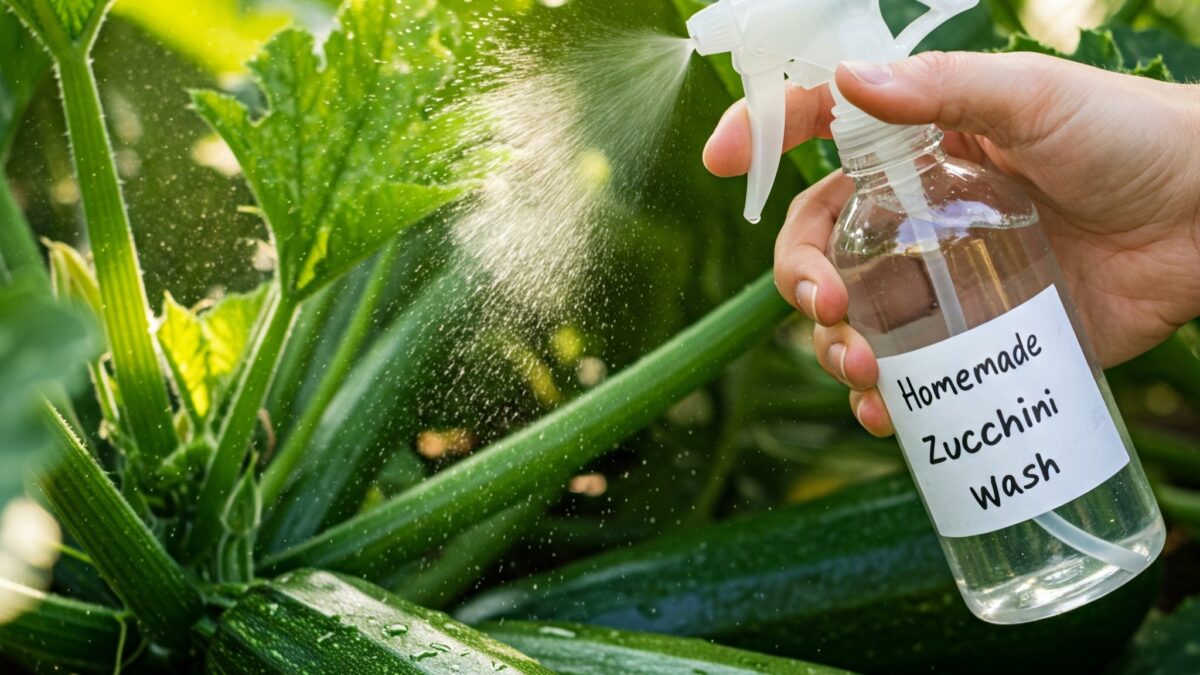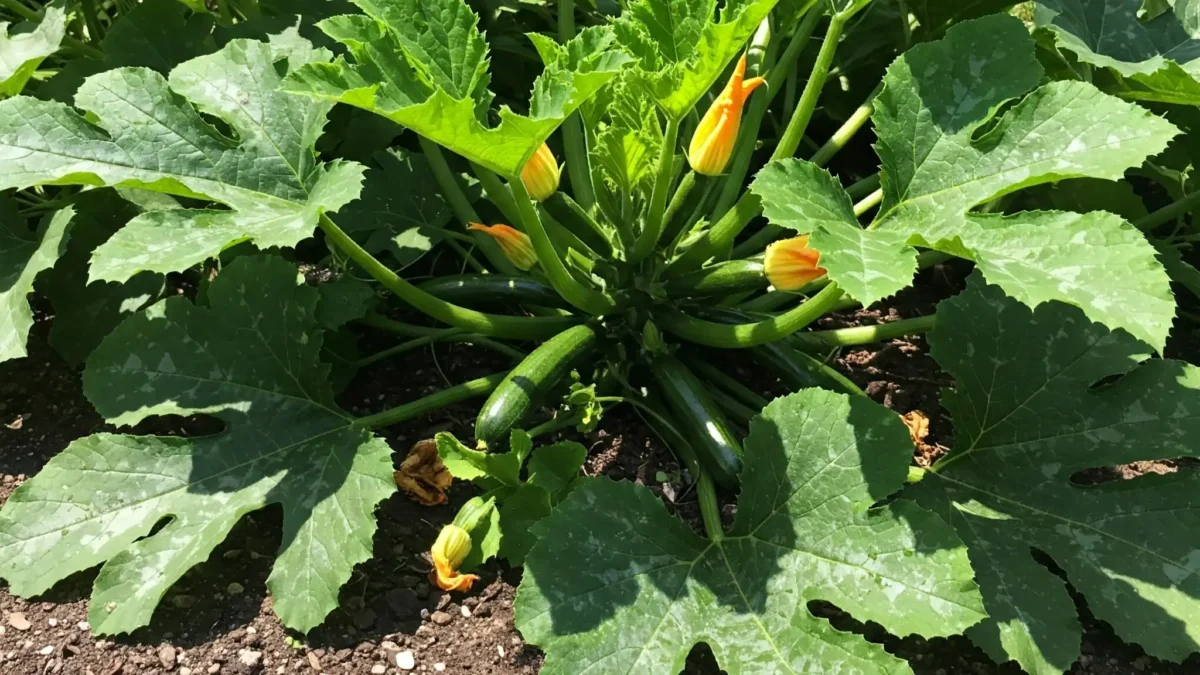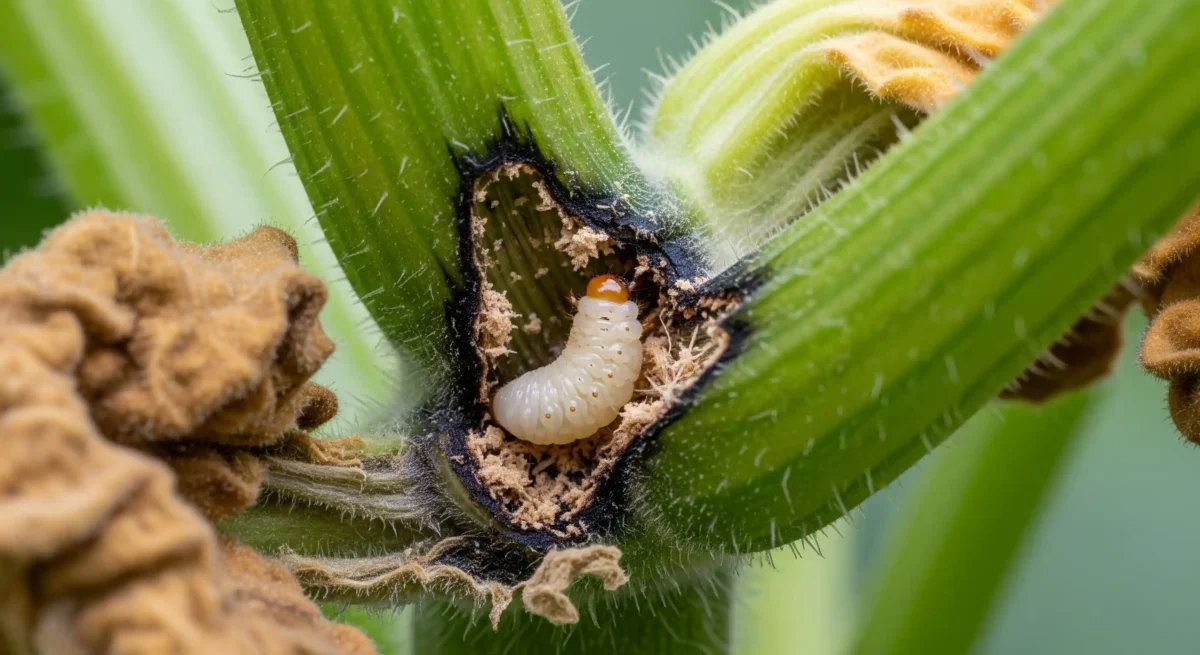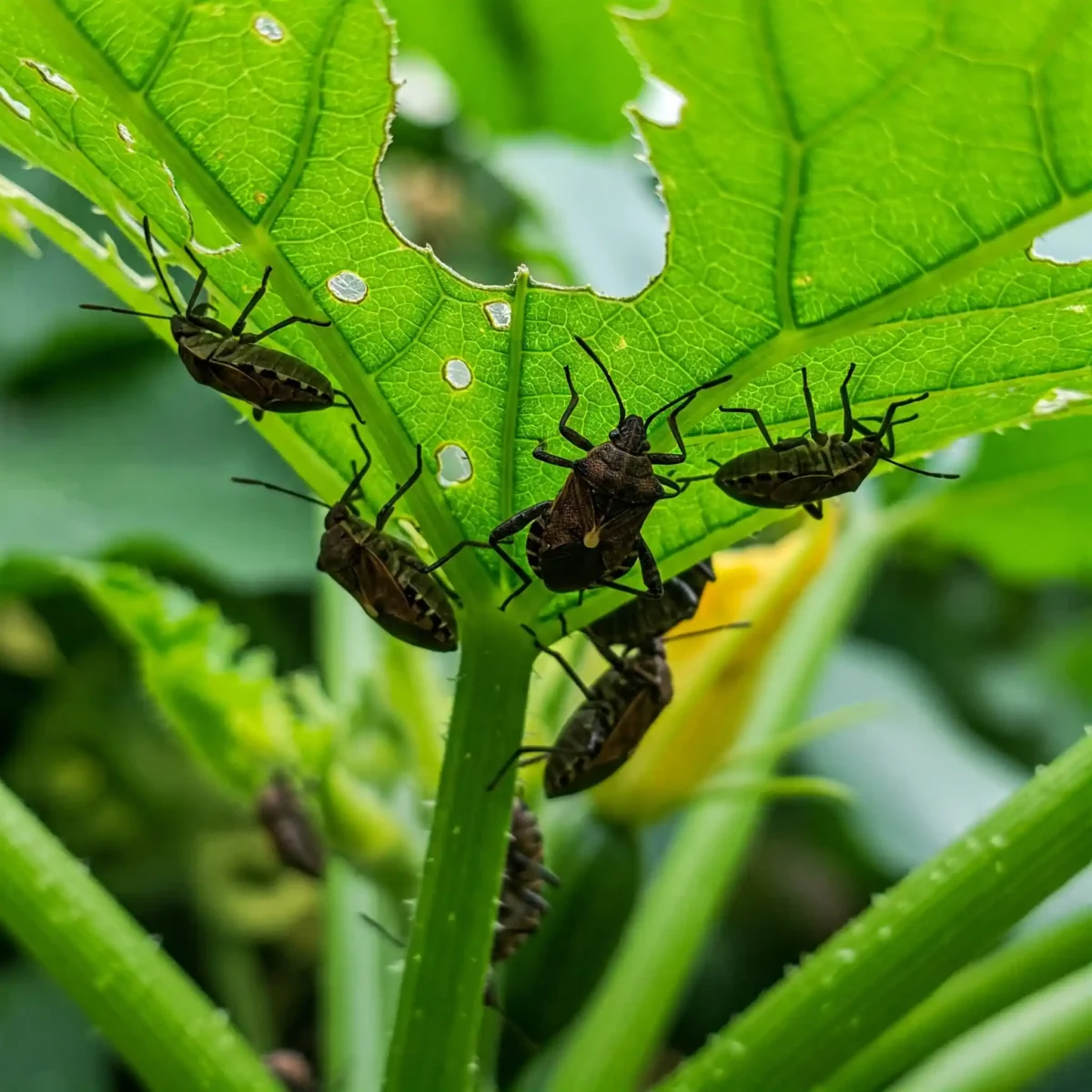Stop Losing Zucchini Seedlings! The Row Cover Trick You Need to Know
Every year I become so thrilled imagining those beautiful green (or yellow!) fruits stacking up, ready for grilling, baking, zoodling—you name it. But believe me, my first few tries fell short of the great success I had hoped for. Thinking my little seedlings would simply take off, I remember putting them out, so proud. How wrong I was! Within days, they were full of holes, wilted, and practically destroyed by cucumber beetles I didn’t even see coming. It was a difficult lesson: those delicate young zucchini plants, just finding their way in the vast wide garden, are very vulnerable little things. Getting them off to a vigorous, strong start and preventing that early heartbreak depend on not only helpful but absolutely vital protection from the beginning. How then do we properly protect them from those bothersome insects and provide them the greatest opportunity to flourish? Let’s explore two really successful main strategies: properly applying row covers and providing those valuable seedlings the constant TLC they merit.
Why Bother Protecting Young Zucchini, Then?
You might be thinking, “Come on, they’re squash! Don’t they essentially grow like weeds if you only glance at them?” True, their later vigor has some truth, but it’s somewhat misleading for the early days. Although mature, established zucchini plants can be very productive (occasionally even too much), the young ones are ideal, soft targets for a handful of particular and rather harmful problems:
- Annoying Pests: Sometimes the rogues’ gallery can seem annoyingly long! Especially nasty bad guys are cucumber beetles—both the striped and spotted kinds—as they are well-known carriers of bacterial wilt. Even with the soil wet, this condition can make a plant wilt and die with startling speed, apparently overnight. With their shield-shaped bodies, squash bugs congregate and use their sharp mouthparts to drain the essential sap straight from stems and leaves, creating yellow patches that finally become brown and crispy. Then there is the dreaded squash vine borer larva, a sneaky grub that burrows straight into the stem’s base, interfering with water flow and frequently causing the whole plant to unexpectedly wilt and fall over, usually past saving. Young plants just lack the size and developed root systems to resist such an onslaught.
- Weather Woes: Gardening always means monitoring the weather, right? Unexpected late cool snaps, cold nights, or unexpectedly strong winds can really stress small seedlings even if you carefully plant after your area’s average last frost date. Growth may stop and their fragile leaves may become tattered. A remarkable difference in buffering these environmental stresses during those first few vital, vulnerable weeks can be achieved by simply providing them some physical shelter.
Imagine sending a kindergartener off to school on a surprisingly blustery morning with a warm coat, a hat, and perhaps even mittens; that tiny bit of additional protection offers comfort and confidence for them to confront the day.
Row Covers: The Best Friend of Your Zucchini Seedlings
What then is one of the most efficient, non-chemical methods to offer this vital early defense? Enter the simple, yet very helpful, row cover!
What Exactly Is a Row Cover?
Imagine a very thin, translucent, breathable fabric; it feels almost like the interfacing used in sewing projects, but it’s especially made for garden use. Basically, that’s a row cover. Though they provide a good physical barrier against many undesired visitors, they are designed to let vital sunlight (often 80-95% transmission), air, and rainwater pass through easily.
How Do They Assist?
Row covers physically block pests like cucumber beetles and squash bugs from even reaching your young, vulnerable plants, therefore blocking them directly. They cannot eat if they cannot land on the leaves; more importantly, they cannot lay the eggs that spawn the next generation of insects. Isn’t it brilliant? They also catch a bit more heat below as a bonus (usually increasing the temperature by 2-5 degrees F), which can help early growth and offer a buffer against those chilly nights. They also serve as a soft windbreak, therefore lowering physical stress on the seedlings.
Effectively Using Row Covers
Success isn’t difficult; yet, timing and technique really do matter!
- Install Immediately: Put the row cover on the very same day you plant your seeds or transfer your seedlings, according to the golden rule. Act now! Pests can locate your plants even after only a few hours of exposure. Don’t let those eager pests have that window of chance!
- Support is Better (Usually): You have choices here: drape or tunnel. If the young plants appear strong enough, you can softly drape the fabric straight over them; however, usually, using hoops to build low tunnels is preferable. These hoops—which you can buy ready-made, bend into arches using heavy-gauge wire, or use flexible PVC pipes—support the fabric and keep it raised off the leaves. This guarantees improved air circulation around the plants and helps to avoid possible abrasion on windy days.
- Seal the Edges Completely: No excuses! Fasten the edges. Many efforts fail at this stage, which is absolutely essential. Pests such as cucumber beetles and squash bugs are masters at locating small gaps. You have to either weigh down the fabric edges with rocks, soil bags, lumber, or other heavy items creating a complete seal or bury them firmly and completely in the soil all around. Look closely for any holes where insects could crawl under. Believe me, we have all experienced this lesson the difficult way; finding bugs under the cover as a result of a little mistake is really annoying. A small opening is equivalent to leaving the garden gate wide open.
The Million-Dollar Question: When Should I Remove Them?
Alright, here is the vital trade-off. Like other squash, zucchini plants have distinct male and female blooms; they depend on pollinators—usually bees but occasionally other insects—to transfer pollen from the male flowers to the female flowers to start fruit growth. Leaving the row covers on forever prevents those necessary pollinators from entering to perform their duties! Once you notice the plants beginning to actively generate flowers, you simply MUST take off the row covers; usually, the male flowers (on thin stems) will appear first, followed soon by the female flowers (identifiable by the little immature fruit at their base). Depending on the type and growing conditions, this change often occurs several weeks after planting. Removing the covers does make the plants susceptible once more to insects coming later in the season. By this point, though, the plants are often far bigger, more established, and more robust, more able to endure some degree of insect pressure. Stay alert even after the covers are gone! Regularly scout for pests and control them as required by means such as handpicking insects into soapy water or applying focused organic sprays if required.
Strong Plant Development Requires Basic Seedling Care
Though they perform best when your young plants are naturally healthy and vigorous, row covers are a great first line of defense. The basis is good fundamental care.
- Harden Off (If Started Indoors): Did sowing your zucchini seeds inside give you a head start? That’s wonderful for earliness, but you totally, positively have to harden those seedlings off before putting them out into the garden. Consider their spoiled indoor existence: constant temperature, no wind, filtered light. Sudden exposure to drying winds, changing temperatures, and the full force of direct sunlight is a surefire way to cause shock, major sunburn, or worse.
- How to accomplish it: Usually over 7-10 days, it’s a gradual process. Protected from strong wind, begin by putting the seedlings outside for only one or two hours in a shady, sheltered location. Every day, slowly expose them to periods of direct morning sun and increase the time they spend outside; afternoon sun is more severe. Especially if temperatures fall drastically, keep in mind to bring them back inside at night for the first few days. Look for any signs of stress on the leaves, such as wilting or scorching. Though it may seem like a hassle, missing this vital acclimatization phase could greatly impede growth, cause major leaf damage, or perhaps kill your valued seedlings.
- Gentle Transplanting: When transplanting, handle seedlings carefully by their root ball or leaves (not the delicate stem!) to avoid bruising or root damage. Plant them at the same soil depth they were growing in their pot; too deep planting might cause stem rot. Gently but firmly firm the soil around the base to remove big air pockets.
- Consistent Watering: Young plants are developing their root systems and require constant moisture, but they really hate sitting in waterlogged soil (which promotes root rot). The aim is uniformly moist, not soaking wet. Whenever the top inch or two of soil feels dry to the touch, water deeply at the base of the plant. Avoid overhead watering that splashes dirt onto the leaves since this is a frequent method for spreading fungal diseases. Generally speaking, morning watering is preferable since it lets leaves dry before night.
- Full Sun Required: Zucchini are genuine sun worshippers! To power all that growth and fruit production, they require plenty of sunshine. Ensure beyond doubt they are planted in a site getting at least 6-8 hours of direct, unobstructed sunlight every day. Less sunlight usually means leggy plants and much less zucchini—a letdown!
- Spacing Matters: Allow ‘Em Room! One might easily underestimate the size of zucchini plants. Don’t cheat; look at your plant tag or seed packet for the advised spacing. They turn into bushy, sprawling behemoths. Good air circulation around the leaves depends on sufficient spacing—often 2-3 feet apart, occasionally more for vining types. This airflow significantly lowers the chance of common fungal diseases like powdery mildew taking hold and helps leaves dry fast after rain or watering. Though it may seem illogical, allowing them space results in better, more fruitful plants. Don’t overcrowd them.
Rapid Troubleshooting
Even with the best care, sometimes issues pop up. Here are a few typical ones:
- Yellowing Leaves: Yellowing leaves are a frequent sign with many possible causes. Check the soil moisture first. Are you under watering (bone dry) or over watering (soggy soil)? Change your watering techniques appropriately. Should the moisture level appear acceptable, it might suggest a need for nutrients, particularly nitrogen. A light feeding with a balanced liquid fertilizer—like fish emulsion or a general-purpose vegetable fertilizer—might help perk the plant once it is established (a few weeks after transplanting). Occasionally, older, lower leaves naturally yellow and die; this is usual if the rest of the plant seems healthy.
- Sudden Wilting: Sudden wilting is concerning! First, directly at the base, check the soil moisture. Water deeply and check whether the plant recovers in a few hours if it is quite dry. But, if the soil is wet but the plant is withering significantly, check the base of the main stem directly at the soil line closely. You probably have the dreaded squash vine borer if it appears mushy, water-soaked, or if you notice tiny holes containing sawdust-like material called frass—insect excrement. Once the plant wilts badly from borer damage, however, it is usually too late to save it. This tragic situation really highlights the great value of employing those row covers carefully during the early, most vulnerable stage.
Finishing It Off
From the beginning, providing your young zucchini plants that additional layer of protection is really one of the finest uses of time and work you can do for a gratifying, rich harvest later in the summer. Just always remember that vital step of removing row covers promptly when the flowers appear to let the pollinators work their magic; they are an extraordinarily efficient, natural tool for blocking those harmful early-season pests. Combine this physical protection with careful attention to basic seedling care—proper hardening off, gentle planting techniques, consistent and appropriate watering, providing plenty of sunshine, and giving them enough space to flourish—and you’ll be well on your way to enjoying mountains of delicious, homegrown zucchini. Happy growing and prepare for the harvest!
FAQ
Can I leave the row covers on all season long?
Certainly not, unless you really don’t want any zucchini fruit! Usually done by bees transferring pollen between male and female blooms, zucchini flowers need pollination. These vital pollinators can reach the flowers if you take off the covers right once you notice them beginning to open. No pollination means no zucchini!
Should I remove the row cover if insects manage to get under it?
Sometimes it happens if a tear forms or an edge wasn’t quite sealed. Stay calm! Should you see insects relishing a protected feast under the cover, take it off momentarily. Decisively handle the pests; handpicking them into a bucket of soapy water is usually rather successful. Then, inspect the whole perimeter, re-secure any loose edges, tape any holes as required, and replace the cover firmly.
Should I be aware of several different types of row covers?
Row covers mostly differ in weight, which influences light transmission and warmth. A lightweight or “insect barrier” grade cover will be ideal for protecting warm-season crops like zucchini where the main objective is insect blocking (and perhaps acquiring only a little bit of warmth early on). These let the most light through. Typically, heavier-weight covers are used to extend the season into colder weather or offer notable frost protection for other crops.


